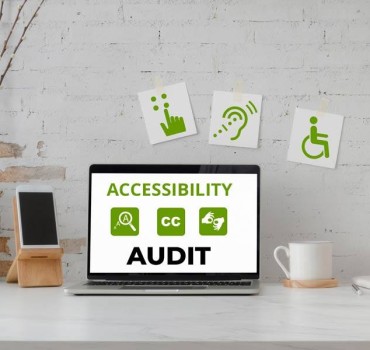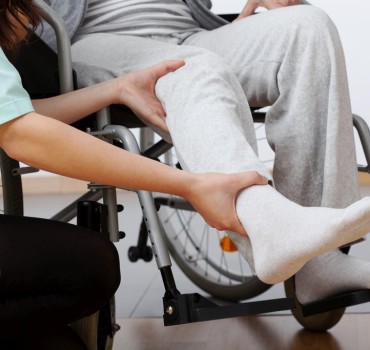
Case Studies
What We Have Learned From Auditing WCAG Website Compliance Across Sectors
At Access by Audit, every accessibility audit tells a story. Across charities, hospitals and public sector organisations, we see the same challenges repeat. These are not one-off problems. They are signs of a deeper issue: a reliance on automated tools like an accessibility checker, a lack of real user testing and a misunderstanding of what it takes to build a wcag website.
This page brings together key insights from three of our recent audits. Each one is linked to the full case study, so you can dive deeper. What they all have in common is a commitment to making a real difference. Not just fixing code, but creating a digital experience that works for everyone.
Common Accessibility Issues When Auditing A WCAG Website
Whether we are auditing a hospital website, a police records platform or a national charity, the same types of issues show up:
- Form fields that lack accessible labels
- Navigation menus that do not respond to keyboard use
- Colour contrast problems that make content hard to read
- Pages that score well on an accessibility checker, but still fail real users
These problems are not about bad intentions. They are the result of a system that prioritises speed over inclusion, and automation over real experience. Our role is to help our clients see what they cannot see yet. We do this through expert manual audits and testing by disabled users.
British Wireless for the Blind Fund
We collaborated with Giant Digital on a new website for British Wireless for the Blind, a national charity that provides audio equipment to people with sight loss. Their values were clear from the start: if anyone should have an accessible website, it was them.
Although the site performed well in automated tests, our disabled testing team found several barriers. The audio player had no accessible controls. Navigation elements were missing key attributes. These are things no accessibility checker flagged.
The full story: Case Study: British Wireless for the Blind
Great Ormond Street Hospital
Great Ormond Street Hospital needed an accessibility audit across several of their websites, including key microsites. Automated tools had suggested the sites were in good shape, but our real-world testing told a different story.
We found donation forms that were not accessible, missing headings and interactive content that could not be controlled. The hospital acted swiftly on our findings and published a compliant accessibility statement. They made their wcag website truly work for their audience.
The full story: Great Ormond Street Hospital Case Study
ACRO – The Criminal Records Office
ACRO’s website is a critical part of public access to police records. It must work for everyone, especially people navigating complex legal processes. We audited their site and found major gaps in accessibility, despite it passing standard checks.
By going beyond an accessibility checker and including real user testing, we helped ACRO understand how to fix issues that would never appear in a standard report. The changes improved usability for everyone, not just disabled users.
The full story: ACRO Case Study
Why Accessibility Checker Tools Are Not Enough
An accessibility checker can be helpful for spotting basic technical issues. It can find missing alt text, unlabelled form fields and improper heading structures. However, these tools have severe limitations.
They cannot:
- Tell you if your page is usable by someone with a screen reader
- Detect keyboard traps or hidden navigation failures
- Understand the intent or clarity of your content
- Adapt to real-life use cases that affect real people
Every one of the clients listed above had passed automated tests. It was only when our disabled testers reviewed the sites that the real problems became visible. This is why relying solely on an accessibility checker gives a false sense of security.
What It Takes to Build a WCAG Website
A wcag website is not just one that ticks boxes. It is a site that reflects the spirit of the Web Content Accessibility Guidelines — creating content that is perceivable, operable, understandable and robust.
To achieve that, we go further than technical checks. We involve testers who navigate the web using assistive technologies every day. We look at how content behaves, not just how it is coded.
All of our audits are mapped to WCAG success criteria, but the final judgement always comes from people. If a screen reader user cannot understand a navigation menu, that menu is not accessible — even if the code passes.
Why WCAG Website Compliance Needs Human Insight
Wcag website compliance cannot be left to tools alone. It requires experience, understanding and collaboration. The clients we have worked with all had strong internal teams and capable developers. What they needed was guidance from experts who understand accessibility from both a technical and human perspective.
They also needed help understanding what to prioritise, how to talk about accessibility in their public statements and how to protect their organisation under the EAA.
Every wcag website review we carry out includes a full breakdown of critical, major and minor issues, along with recommended fixes and retesting support. We also provide accessible video evidence and a compliant accessibility statement. This gives our clients legal reassurance while they work through improvements.
Your Next Step Towards Full Compliance
You do not have to guess where your site stands. You do not have to rely on a checklist or a score from an accessibility checker. There is a better way — one that puts users first, builds long-term trust and prepares you fully for the EAA.
If you are ready to take that step, we are ready to help.
Book a free consultation with Access by Audit and get clear, expert advice on how your website can become truly accessible.

Accessibility Audit for a Help Portal
Not all Websites are visible to the public! Websites are usually public-facing and more straightforward to audit. If you can find a website and it... read more »

Website accessibility audit for a publicly-funded body
We have been working recently with an organisation that had launched a new website last year. They had been asked by the UK Government... read more »

How Colour Contrast Failures Break NHS Accessibility: 1.4.3 and 1.4.11 Explained
We were recently approached by a clinical commissioning group in the NHS. They were concerned about the accessibility of their website, which had been... read more »

How a Parish Council Site Failed WCAG 1.1.1 and 2.4.4
How a Parish Council Site Failed WCAG 1.1.1 and 2.4.4 We recently worked with a Parish Council that had been trying to improve its website... read more »
